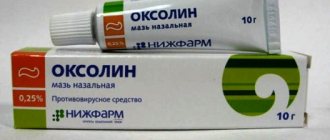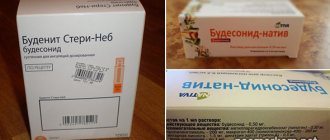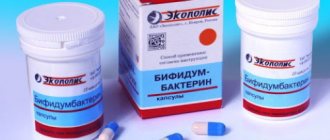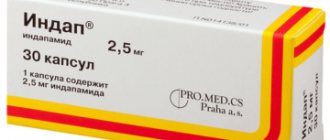Contraindications
According to the instructions, Miconazole is contraindicated for oral and parenteral use during pregnancy, congenital liver dysfunction, and children under 12 years of age.
Any form of medication is prohibited from use in case of hypersensitivity to the components of the composition, herpetic fever, liver and kidney failure, in combination with topical forms of drugs. The main indications for the use of this product are:
- mycoses of superficial and systemic type;
- vaginal mycoses;
- onychomycosis and dermatomycosis;
- fungal balanitis;
- mycoses of the scalp;
- blastomycetosis of the gastrointestinal tract, oral cavity and genitourinary organs.
Having a powerful bactericidal effect, Miconazole is often prescribed as a prophylaxis for fungal infections. It is especially effective in cases where the body has a reduced level of immunological resistance.
Each of the above forms of the drug has its own purpose:
- Miconazole tablets are taken to treat intestinal and oropharyngeal candidiasis.
- Miconazole ointment is used for the effective treatment of skin diseases of fungal origin that are sensitive to the active component of the product. It is also possible to use spray, gel and alcohol solution for these purposes. These drugs are widely used in cases of secondary infection with gram-positive microorganisms.
- When treating fungal balanitis, vaginal and vulvovaginal candidiasis and infections caused by gram-positive microorganisms, Miconazole suppositories should be used.
- Treatment of candidiasis that appears on the mucous membranes of the mouth, pharynx or gastrointestinal tract is carried out using Miconazole gel for oral use.
Miconazole is not recommended for use during pregnancy and liver disorders
. Being a potent drug, Miconazole cannot be without contraindications. The use of this drug is not recommended in the following cases:
- Having an individual intolerance to its components. In such cases, an allergic reaction may occur, characterized by redness, inflammation and itching. If this happens, you must immediately stop taking the drug and consult a doctor.
- Liver disorders. Since the liver is the organ that removes Miconazole from the body, it must be healthy. If there are disturbances in the liver, there is a risk of placing excessive stress on the organ, which can lead to the development of pathological conditions.
- Pregnancy and lactation. Miconazole can affect the development of the fetus, therefore taking the drug during this period is allowed only with a doctor’s permission.
In addition, the use of Miconazole in combination with drugs such as Terfenadine, Astemizole and Cisapride is undesirable. To avoid side effects and carry out treatment correctly, it is necessary to undergo professional diagnostics by seeking help from a specialist.
Miconazole in the form of an ointment is usually prescribed for the following groups of diseases:
- Superficial candidiasis and mycoses;
- Fungal infections of the skin, mucous membranes and nails, including trichophytosis, epidermophytosis of the body and palms;
- Ringworm;
- Systemic candidal infections - as part of complex therapy in the treatment of fungal infections of the intestines, esophagus, and other internal organs;
- Mixed fungal-bacterial infections, partly caused by a number of gram-positive or gram-negative bacteria and fungi of the genus Candida.
Miconazole ointment does not penetrate the bloodstream and, accordingly, does not have a systemic effect on the body, which simplifies its use by patients with other chronic diseases and pathological conditions.
Direct contraindications are:
- Hypersensitivity to the active substance or one of the auxiliary components of Miconazole;
- Age up to 3 years;
- Local use of the drug during lactation and breastfeeding (applying ointment to the mammary glands and nearby areas);
- Pregnancy in the 2nd and 3rd trimester.
The drug is prescribed with caution during pregnancy in the 1st trimester; for children under 12 years of age, monitoring by the attending physician is required.
Hypersensitivity, herpetic fever, pregnancy (II and III trimesters), children (up to 12 years).
Indications for use of the drug
– Fungal infections of the skin and nails caused by dermatophytes or fungi of the genus Candida, sensitive to miconazole.
– Superinfections caused by gram-positive bacteria.
The use of the drug is contraindicated
in case of hypersensitivity to the active substance or other components of the drug.
Treatment with Miconazole during pregnancy and lactation
Laboratory studies have proven that the active components of Miconazole cream are absorbed in small quantities into the deep layers of the skin, penetrating the systemic bloodstream. But it is not known for certain whether the substance passes into breast milk, or whether it penetrates the placental barrier to the fetus. Therefore, doctors recommend using Miconazole during pregnancy and breastfeeding to treat fungus only in the most emergency cases.
Interesting to know
It is not recommended to use this drug simultaneously with other antifungal creams and ointments.
A direct contraindication to the use of ointment is children under 3 years of age. Over the age of three, the product can be used under the constant supervision and supervision of a pediatrician.
Miconazole is available in the form of cream and suppositories. Suppositories are used for vulvovaginal candidiasis.
Find out more
Chemical name
Miconazole
Miconazolum (
Miconazoli)
1-[2-(2,4-Dichlorophenyl)-2-[(2,4-dichlorophenyl)methoxy]ethyl]-1H-imidazole (and as nitrate)
| Name | The value of the Vyshkowski Index ® |
| Ginesol 7 | 0.0031 |
| Mycozon | 0.0024 |
| Daktarin® | 0.0018 |
| Dactanol | 0.0011 |
| Miconazole nitrate | 0.001 |
| Gyno-Daktarin® | 0.0009 |
| Gyno-Dactanol | 0.0007 |
Analogs
Miconazole has a number of analogues, which contain the same or similar active ingredients and other auxiliary components. We are talking about “Mesolitan”, “Dermonistat”, “Funginazole”, “Surolan”, “Amiclone”, “Dectarin”. All of these are effective fungicidal agents.
Doctarin, Aflorix, Metronidazole, Dermonistat, Funginazole.
Types of Miconazole analogues
This drug has a number of analogues that have the same active ingredient:
- Afloris;
- Doktarin;
- Dermonistat;
- Metronidazole;
- Funginazole.
Mode of application
A drug
apply topically.
Fungal skin infections: apply the drug to the affected areas of the skin 2 times a day (morning and evening) and rub until completely absorbed, covering a small area around the lesion. Places that become wet in the area of folds (interdigital spaces, inguinal folds) should be washed and dried with a gauze cloth before using the drug.
The course of treatment depends on the effectiveness of treatment and the results of mycological tests, and ranges from 1 to 6 weeks. The average duration of treatment for skin candidomycosis is 1-3 weeks, for infections caused by dermatophytes - 3-4 weeks, for more protracted infections - 5-6 weeks. Treatment with the drug must be continued for at least 1 week after the clinical symptoms of the disease disappear.
Fungal infections of the nails: after preliminary detachment of the affected nail plate, apply the drug in a thin layer to the nail bed 1-2 times a day, followed by application of an occlusive dressing.
Continue treatment for at least 3 months until the new nail is completely formed.
Depending on the type and severity of the disease, the doctor may prescribe an individual dosage regimen and method of administration of the drug.
This drug is used exclusively topically, on the skin or mucous membranes. As a rule, the exact dosage and period of use are prescribed by the attending physician.
In general, it is recommended to use the ointment 2 times a day, applying it to the affected areas in a thin layer and rubbing in thoroughly. It is advisable to carry out the procedure in the morning and evening before bedtime.
The estimated recovery time for typical forms of fungal infection is 7-14 days, however, it is necessary to continue therapy against pathogens at least until the clinical symptoms of the disease disappear, after which use the ointment for preventive purposes for another 5 days.
We invite you to familiarize yourself with Drugs for the treatment of demodicosis of the eyelids
When treating nail fungus, before applying the ointment, you need to remove the part of the horny plate affected by pathogens, wipe it thoroughly, and then apply a thin layer of the product both to the site of infection and to neighboring areas.
It is advisable to carry out the procedure 2-3 times a day; after application, it is recommended to apply an occlusive dressing. The course of treatment lasts about 3 months and is considered completed if the symptoms of the disease have disappeared and a healthy, intact horny plate has grown back.
When treating mixed fungal-bacterial or systemic, chronic infections, the dosage and timing of use of the drug is prescribed only by the attending physician, based on the current condition of the patient, the severity of the fungal infection, and the concurrent use of other medications.
To prevent candidiasis and other fungal infections, use Miconazole ointment once every few days, applying it in a thin layer to potentially dangerous areas.
Depending on the form of release and the severity of infections, the method of administration and dosage of the drug varies. Suppositories are used intravaginally, cream and alcohol solution - topically, externally, tablets and gel - orally, solution for intravenous administration - parenterally. Each medicine comes with instructions that clearly describe the dosage and method of use.
Miconazole suppositories
To treat vaginal lesions and eliminate dysbiosis, suppositories with Miconazole are used. They must be inserted one suppository deep into the vagina, daily for seven days. Suppositories are administered in the evening before bedtime, when the woman is already lying in bed and is not going to get up. Before insertion, wash your hands and perform appropriate genital hygiene. In the morning after waking up, the remains of the vaginal suppositories will flow out with urine, then you should take a shower.
Miconazole cream
Miconazole cream is intended for topical use and treats fungal infections of the skin and nails. According to the instructions, it is applied in a circular motion to the affected areas of the skin in the morning and evening, rubbing until completely absorbed. It is recommended to grab a centimeter of healthy skin from the edges of the affected area.
The duration of use of the cream depends on the type of fungal microorganism that provoked the disease:
- candidomycosis – 1-3 weeks;
- dermatophytosis, epidermophytosis, trichophytosis, ringworm or versicolor, candidiasis - 3-4 weeks;
- other fungal infections, including those complicated by bacterial inflammation – 5-6 weeks;
- plus two weeks after the symptoms have resolved.
For nail fungus, apply the cream to the nail bed (after removing the nail plate) twice a day. Before the procedure, you should remove the nail with special keratolytic patches or solutions with stearic acid. When applying cream to an unremoved plate, the effectiveness decreases significantly. After application, apply a tight bandage to the nail bed. The duration of therapy will be about three months.
For therapy and for preventive purposes the appearance of mycoses of the oral cavity and gastrointestinal tract, a gel for oral administration is used. According to the instructions, adults and children take half a dosage spoon (one spoon contains 5 ml or 124 mg of miconazole nitrate) four times a day. Young children should receive a quarter spoon a similar number of times. It is recommended to keep the medicine in the mouth for as long as possible rather than swallowing it immediately. Treatment lasts at least a week from the moment the symptoms disappear.
Miconazole tablets
For fungal infections, doctors prescribe Miconazole - the instructions for use of the tablets indicate that they are prescribed orally alone or in combination with intravenous administration of a solution. They treat mycoses of the gastrointestinal tract and are also used to prevent the disease. The dosage for adults is 250 mg (one tablet) 4 times a day, for children – 20 mg/kg body weight per day.
For systemic mycoses, Miconazole solution is used for intravenous administration. The daily dosage is 10 mg/kg, sometimes increased to 30 mg/kg body weight. Injections are administered simultaneously, not exceeding a dose of 600 mg at a time, slowly over 30-60 minutes. Sometimes doctors administer the solution by drip in several doses.
Spray (solution) for treating skin and nails is effective in the treatment of smooth skin deprivation - ringworm, pityriasis versicolor, scab. The product can be used to eliminate trichophytosis, microsporia, and dermatophytosis. Apply the spray 1-2 times a day. Treatment lasts until the infection disappears, plus another two weeks to prevent relapse.
Alcohol solution
To treat onychomycosis or prevent the development of the disease on adjacent nails when one plate is affected, an alcohol solution is used. It is applied using the included brush to the affected nails twice a day. The duration of treatment depends on the rate of nail growth, approximately three months. You can combine an alcohol solution with cream.
Miconazole: instructions for use, price
- Dermatologist of the highest category Petr Viktorovich
- 44401
- Update date: November 2019
Among all human diseases, fungal diseases are among the most common. They often require complex and long-term treatment with modern drugs. And one of these remedies is Miconazole, an effective remedy for various fungal infections.
Doctors in many medical fields quite often resort to the proven drug Miconazole in their practice. Instructions for use introduce its anti-inflammatory and antifungal properties.
This is a synthesized agent that actively acts against dermatomycetes and other parasites.
Widely used in the treatment of gynecological diseases associated with infection of the genital organs by microorganisms.
The drug miconazole is available in the form of:
- tablet form – 250 g;
- oral gel – 1020 g;
- liquid solution – 1020 g;
- alcohol solution – 1020 g.
The excipients are:
- cetostearyl alcohol;
- OS-20;
- macrogol;
- Proxanol.
The fungicidal effect of the drug is caused by the ability of miconazole to destroy the synthesis of ergosterol, which manifests itself in damage to the fungal cell membrane. Losing their integrity, the mushrooms quickly collapse.
According to its pharmacological functions, Micanozol distinguishes three areas:
- antibacterial effect aimed at certain types of gram-positive bacteria;
- antifungal effect against dermatomycetes and yeast parasites; impact on coccal infections.
The drug acts locally, practically without penetrating into the circulatory system.
In relation to other substances, Miconazole behaves actively:
- increases the activity of anticoagulants;
- enhances the effect of hypoglycemic derivatives of phenytoin;
- provokes a risk of side effects when taken simultaneously with carbamazepine;
- acts as a potential enhancer of coumarin anticoagulants.
Miconazole should be used as directed by a doctor.
Correct use of the drug is the key to successful treatment and the absence of unwanted reactions from the body. Features of the use of Miconazole depend on the chosen form of the drug.
Pills
The tablet form of Miconazole is intended for internal use. Often, to consolidate the effect and obtain better results, in parallel with the tablets, the patient is prescribed an intramuscular injection of Miconazole solution. Most often, a similar regimen is used in the treatment of gastrointestinal mycoses and for preventive purposes.
The adult dosage involves taking one tablet of the drug 4 times a day. If Miconazole is prescribed to a child, then the average dose is calculated relative to body weight (20 mg per kg).
A single dose of the drug depends on the patient’s age:
- children should take the medicine a quarter of the dosage spoon included with the drug, 4 times a day;
- The adult dosage is half a spoon.
You should not immediately swallow the gel; it is advisable to keep it in your mouth for a while. After the symptoms of the disease are completely eliminated, treatment should be continued for about a week in order to consolidate the results obtained. A more precise course of treatment is determined by a specialist.
Topical miconazole is used to treat nail and skin fungi. Miconazole cream, ointment or special liquid must be applied to the affected area, then rubbed in with light massage movements until the product is absorbed. If you carry out this treatment on a daily basis, the first effect will be noticeable after 2-3 weeks. And a month and a half after the start of therapy, complete recovery from fungal infection is possible.
Experts recommend using the drug for at least another week after all signs of the disease have been eliminated. This approach will eliminate the likelihood of relapse.
Miconazole liquid is most often used in the treatment of onychomycosis. It should be applied to the affected nails and the skin around them, and then bandaged with a bandage. This therapy has a significant duration. You need to be treated until a completely healthy nail grows. And the application of the drug is carried out twice a day.
If the disease is systemic in nature, then Miconazole is prescribed intravenously. The dosage is determined by the doctor individually for each patient, but the average daily dose is 600 mg. If necessary, it can be increased.
The administration should be performed simultaneously, but over a long period of time (from half an hour to an hour). Droppers are most often used for this. It should be remembered that rapid administration of the drug can negatively affect the heart rhythm, causing vomiting, so care must be taken during the procedure.
Before administering Miconazole against fungus, it is recommended to dilute the contents of the ampoule with a sodium chloride solution. Specific proportions of drugs are determined by a specialist.
This form of the drug is intended for vaginal administration. Suppositories are used to treat mycoses of the female genital organs and are administered one suppository daily before bedtime. In this case, it is advisable to insert the suppository as deeply as possible into the vagina.
After the symptoms of the disease disappear, therapy continues for another two weeks. This approach is necessary to exclude the latent course of mycosis and possible relapses of the disease.
Interaction with other drugs
The active substance Miconazole inhibits the processes of biological synthesis of ergosterol membrane membranes of pathogens, and also increases the permeability of their cell walls, as a result of which microorganisms stop multiplying and quickly die.
The drug is effective against yeast fungi, dermatomycetes, as well as certain representatives of gram-positive and gram-negative bacteria. Miconazole is quickly metabolized by the liver, partially excreted unchanged in the urine, and does not penetrate the blood-brain and histohematic barrier.
In the vast majority of cases, miconazole does not cause side effects when used topically. In some cases, slight redness of the treatment area, a feeling of discomfort and burning, as well as tingling at the site of application of the product may be observed.
Typically, the above symptoms disappear after 1-2 days of using the drug. If side effects do not disappear, but rather intensify, then it is necessary to discontinue Miconazole therapy and consult your doctor for further instructions.
We suggest that you familiarize yourself with Terbinafine ointment for thrush in men
The parallel use of this ointment with other antifungal drugs for topical use, as well as surface antiseptics, is not recommended - the therapeutic effect of therapy can be significantly reduced.
The drug is not addictive, cases of overdose are unknown. To achieve the maximum therapeutic effect, antifungal therapy should be carried out in parallel with compliance with personal hygiene standards.
Use shoes and underwear only made from natural materials that promote air microcirculation. Clothes should not be too tight or tight. When visiting public places (baths, saunas, beaches), use only an individual towel and natural soap with a neutral pH level. Limit the use of deodorants and synthetic scented hygiene products.
You should also normalize nutrition and strengthen the immune system (physical exercise, taking immunomodulators based on interferon and vitamin-mineral complexes).
If no signs of improvement in the patient’s condition are observed within 3 weeks or more, then it is necessary to stop using the ointment and consult a doctor for re-diagnosis.
If the product gets into your eyes, rinse them thoroughly with warm water without using soap or other detergents. If Miconazole is accidentally taken orally in this dosage form, gastric lavage is required.
Concomitant use with other local antifungal drugs may weaken the therapeutic effect of Miconazole.
When used systemically, the active substance potentiates the work of hypoglycemic agents, calcium channel blockers, phenytoin, HMG-CoA reductase and anticoagulants, mutually weakens the effectiveness of rifampicin and provokes strong adverse reactions with cisapride, astemizole, carbamazepine, terfenadine.
Miconazole is effective against fungal diseases
The drug miconazole is often prescribed to patients suffering from fungal diseases. It has a gentle effect on the skin or nail plate, effectively fighting harmful microorganisms.
The active substance of the drug is miconazole nitrate. To enhance its effectiveness, the drug may contain other components, the presence of which is determined by the specific pharmacological form of the drug. However, regardless of it, the medicine has a pronounced antibacterial and antifungal effect.
The effectiveness of this drug is based on its ability to freeze the biosynthesis of ergosterol in the membrane and plasma membranes of fungi. In addition, the drug is able to change the vapor permeability and lipid composition of cell walls.
Yeasts and dermatomycetes, as well as some gram-positive bacteria, are particularly sensitive to miconazole nitrate. Therefore, before treatment with this drug, the patient should undergo a thorough diagnosis in order to identify the specific type of disease.
When Miconazole is used topically, a small amount of metabolites penetrates into the blood. The main component of the drug is excreted by the liver, and in case of systemic use, by the kidneys. The drug practically does not penetrate into the cerebrospinal fluid, since it is characterized by difficulty in overcoming histohematic barriers.
One of the side effects is chills
The likelihood of side effects when taking this drug is very low, however, there are cases associated with individual intolerance to the components of the drug. Symptoms of side effects directly depend on the method of taking the drug:
- When used internally, Miconazole can cause various manifestations of allergies. Some patients experience nausea and diarrhea due to general malaise. Many patients do not associate these symptoms with taking the drug, believing that they were simply poisoned.
- If external use was external, then local irritation and allergies may develop.
- When administered intravenously, chills, skin rashes, diarrhea, thrombophlebitis and dizziness are possible.
All of the above symptoms indicate that the drug is not suitable for your body. In such cases, you should stop taking it and consult a doctor who will prescribe the most competent course of treatment.
Miconazole increases the activity of anticoagulants and drugs that are derivatives of phenytoin and sulfonylurea. Side effects may occur when Miconazole is combined with Carbamazepine.
When using the drug in combination with the following medications, there may be a risk of allergy:
- Terfenadine;
- Astemizole;
- Cisapride.
From the immune system: hypersensitivity reactions, including anaphylactic reactions, angioedema
From the skin and subcutaneous tissue: rash, itching, erythema, dryness, urticaria, contact dermatitis, reactions at the application site, including skin irritation, hyperemia, burning, tingling.
For systemic use
inhibits cytochrome P450 CYP3A4/2C9 and inhibits the metabolism of drugs that are metabolized by these enzymes. Due to limited systemic availability, clinically significant interactions are rare. However, the drug should be used with caution simultaneously with oral anticoagulants (for example, warfarin) and the anticoagulant effect should be monitored.
Also, with the simultaneous use of miconazole with hypoglycemic agents - urea derivatives or phenytoin, the effect of the latter may be enhanced.
Concomitant use of the drug with other topical forms of drugs is not recommended.
The instructions for use contain information about the drug interactions of Miconazole with other medications:
- not combined with Astetmizole, Terfenadine, Cisapride;
- suppositories reduce the spermicidal effect of condoms and diaphragms;
- used with caution in combination with anticoagulants (Warfarin), Phenytoin, urea derivatives;
- increases the effectiveness of oral hypoglycemic drugs, Diphenin.
The instructions state that when taking Miconazole internally, side effects may include nausea, diarrhea, allergic manifestations, hepatitis, and when used externally - chills, dizziness, diarrhea, skin irritation, contact dermatitis. Thrombophlebitis may develop at the injection site. With local external use, overdose is impossible due to the low absorption of the active substance into the systemic circulation.
If the cream or solution is accidentally ingested or if the recommended dose is exceeded, vomiting, stomach pain, hallucinations, and allergic reactions on the skin may occur. When these symptoms appear, the patient's stomach is washed and a sorbent (activated carbon, Polysorb) is given. After this, the patient is referred for maintenance treatment.
Local skin reactions (burning, tingling, redness), irritation of the vaginal mucosa, pain in the lower abdomen, allergic contact dermatitis.
We suggest you read: Hair follicles (hair follicles) are inflamed - what to do?
Side effects
Among the side effects that may occur in patients with systemic administration of the drug miconazole, the most common are the following:
- skin itching;
- rashes on the skin;
- nausea;
- vomit;
- phlebitis (inflammation of the venous wall).
The occurrence of anaphylactic reactions is possible. During long courses of treatment, patients may experience diarrhea. In some cases, hepatitis develops.
When the drug miconazole is used externally, skin irritation and contact dermatitis may occur.
Side effects and overdose
If the dosage is violated, vomiting and diarrhea may occur.
Since Miconazole is a potent drug, when using it you must strictly follow your doctor's recommendations. If the recommended dosage is violated, vomiting and diarrhea may occur.
In such cases, the dose of the drug is usually reduced and symptomatic treatment begins. Further therapy is carried out in accordance with the instructions for Miconazole and under close medical supervision.
Skin irritation is possible, which usually goes away after discontinuation of the drug
In case of accidental ingestion of a large amount of the drug, gastric emptying is recommended.
The drug is intended for external use only.
Precautions when taking Miconazole
The drug is not prescribed to children under 3 years of age. The recommended age at which you can start treatment with Miconazole to eliminate fungus is 16 years and older.
There is no need to adjust the dose or exclude the use of an antifungal agent in case of impaired renal or liver function.
The drug should be used with caution by people suffering from diabetes. Treatment with suppositories significantly reduces the effectiveness of condoms and other contraceptives based on silicone and latex. If one partner has an infection, treatment should also be given to the other.
Any allergic reactions should be a reason to discontinue the use of Miconazole.
Pharmacology
Inhibits the biosynthesis of ergosterol in the membrane and plasma membranes of fungi, changes the lipid composition and permeability of the cell wall. The most sensitive are dermatomycetes and yeasts. Effective against pathologies caused by Coccidioides immitis, Cryptococcus neoformans, Petriellidium boydii, Paracoccidioides brasiliensis, Candida albicans, Trichophyton, Epidermophyton, Malassezia furfur, and some gram-positive bacteria.
With local applications, only a small number of metabolites are detected in the blood. It is quickly destroyed in the liver; when administered systemically, 14–22% of the dose is excreted in the urine in the form of inactive derivatives. The pharmacokinetic profile is three-phase with T1/2 of 0.4, 2.1 and 24.1 hours for each phase. It overcomes histohematic barriers poorly. It practically does not penetrate into the cerebrospinal fluid.
Storage conditions
Miconazole is currently available in several dosage forms. In addition to ointment, it is available as cream, spray, oral tablets, and intravaginal suppositories. All of the above forms of the drug, except tablets, are used topically. Tablets are used only for complex therapy of generalized forms of fungal infection.
Miconazole ointment or cream should be stored in a cool, dark place with the lid closed. Before opening the tube, the shelf life of the drug is 2 years. After the seal is broken, it is recommended to use the ointment (observing storage conditions) within 1 month.
The active ingredient is miconazole nitrate, at a 2% concentration. The tube contains 15 grams of the drug. Auxiliary components that form the main working structure of the drug are cetostearyl alcohol, polyethylene glycol ethers, macrogol and propylene glycol.
Store in original packaging at temperatures between 8°C and 15°C.
Keep out of the reach of children.
All forms of the drug, with the exception of the solution for intravenous administration, are available without a prescription. They are stored at a temperature not exceeding 25 degrees. Shelf life: two years for cream, four years for gel, three years for other formats.
Indications for use and mechanism of action
The effects of Miconazole depend on its form of release. The most convenient and frequently used treatment options for foot fungus are ointment and cream. The active component of the drug penetrates deep into the fungal cell and causes its destruction at the membrane level. This may be due to the reduction of the protein ergosterol, without which the fungus ceases to exist.
Both external agents have the same indications for use, including various infectious lesions of the skin and nail plates. The external remedy is especially effective for the following types of fungus:
- Candida;
- Dermatophytes;
- Trichophytes;
- Molds;
- Microsporia;
- Ringworm simplex
Due to the presence of antibacterial properties, ointment and cream are used against coccal pathogens: the drug negatively affects staphylococcal and streptococcal forms.
Release form, storage conditions and composition
Miconazole is produced in several dosage forms.
This drug is intended to combat fungi both for local and internal use. Therefore, its release is carried out in several dosage forms, used depending on the localization of pathogenic microorganisms:
- Miconazole cream for topical use. Available in tubes of 15 and 30 grams.
- Miconazole suppositories for vaginal administration. The standard package of Miconazole contains 8 or 15 suppositories. Dosage – 0.1 grams.
- Miconazole gel for topical use. Sold in 40 gram tubes.
- Tablets for oral administration. Typically a pack contains 10 tablets with a dosage of 250 mg.
- Solution for intravenous injection. Sold in glass ampoules of various dosages. The most popular is a 1% solution. The package contains 5 ampoules of 20 ml each.
- Alcohol solution. It is bottled and comes complete with a special brush. Volume – 30 ml. 1 ml of such a solution includes 20 mg of the active substance.
- Liquid for external use. Supplied in aerosol packages of 30 grams.
Packaging: 15 g or 30 g in a tube; 1 tube per pack.
Tablets and ampoules for infusions
The tablet form of Miconazole and intravenous infusions are used for fungal infections of the gastrointestinal tract. The tablets are taken 4 times a day; in parallel, the drug can be administered into a vein. Dose for children – 20 mg/kg.
Intravenous infusions require caution; drip administration is sometimes used (600 mg per day). Sodium chloride is used to prepare the solution. Slow administration prevents vomiting and cardiac problems.
Additionally
Avoid contact with the drug
in the eyes and on open wounds.
If local reactions occur or there are no clinical manifestations of treatment effectiveness within 4 weeks, use of the drug should be stopped and additional examination should be performed.
The drug should be used with caution in patients with diabetes mellitus and microcirculation disorders.
If nails are affected, it is recommended to trim them as short as possible.
If the feet are affected, it is recommended to pay special attention to the treatment of the interdigital spaces. It is recommended to wear loose, well-ventilated shoes and change socks at least once a day.
The ability to influence the reaction rate when driving vehicles or other mechanisms.
The drug does not affect the reaction rate when driving vehicles or other mechanisms.
The drug can be used in pediatric practice only after consultation with a doctor.
special instructions
There are a number of recommendations for taking this drug that should be followed for effective and safe treatment:
- In case of microcirculation disorders and diabetes mellitus, as well as during lactation, Miconazole should be taken under close medical supervision.
- To carry out effective therapy for vaginal fungi, both sexual partners must undergo treatment. Suppositories can reduce the effectiveness of mechanical contraception.
- When treating nails, they should be trimmed as short as possible. In this case, the interdigital spaces and the foot are subject to treatment. It is also recommended to wear comfortable, breathable shoes and change socks frequently.
- If there are local reactions to treatment procedures and a long-term lack of clinical improvement, it is necessary to choose another method of therapy.
Also, miconazole should not come into contact with the eyes. If this happens, the eyes should be rinsed with plenty of water.
The special instructions section in the instructions for use should be studied especially carefully, because it contains important rules for using the drug:
- Miconazole suppositories should not be used during pregnancy in the first trimester; in the second and third trimesters, they are used with caution;
- Do not use oral medications with miconazole nitrate while breastfeeding;
- avoid getting the medicine on open wounds or eyes;
- when treating nail diseases, cut them as short as possible;
- When treating vaginal candidiasis in women, the sexual partner also undergoes similar treatment.











